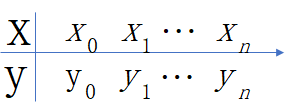- 如何在YashanDB数据库中使用JSON数据类型?
数据库
随着海量结构化与半结构化数据的快速增长,关系型数据库面临性能瓶颈和数据一致性的挑战。JSON作为一种灵活的半结构化数据格式,在多领域数据交换和存储中广泛应用。YashanDB作为支持多种存储结构和高性能事务处理的数据库产品,提供了对JSON数据类型的支持,以满足现代复杂业务对半结构化数据处理的需求。本文旨在基于YashanDB体系架构及存储引擎特性,深入解析JSON数据类型的技术原理与实现方式,为
- 如何在YashanDB数据库中实现数据查询优化
数据库
在现代信息技术环境中,数据量的快速增长使得数据库的性能优化成为重要课题。如何提升查询速度,降低资源消耗,成为了数据库管理人员和开发者必须面对的挑战。有效的数据查询优化不仅能提高响应时间,还能显著提升用户体验与系统效率。在YashanDB数据库中,优化数据查询需从多个技术角度进行综合考量与实际应用。利用索引技术优化查询索引是提升数据库查询性能的常用手段。在YashanDB中,主要支持BTree索引、
- 如何在YashanDB数据库中实现复杂事务管理
数据库
在现代数据库管理系统中,事务管理是一项关键功能。复杂的事务管理可以确保多条SQL操作的原子性、一致性、隔离性和持久性(ACID特性),减少数据的不一致和错误。尤其在高并发场景中,事务管理的机制与实现至关重要。因此,构建高效的事务管理系统,对于提升数据库的性能及应用程序的可靠性具有深远影响。YashanDB的事务特性YashanDB数据库支持全面的事务管理功能,通过多版本并发控制(MVCC)、事务隔
- 如何在YashanDB数据库中管理用户权限
数据库
在数据库管理系统中,用户权限的管理是保障数据安全和系统稳定运行的关键环节。合理的权限控制能有效防止未经授权的访问和误操作,同时满足业务需求的灵活性。对于YashanDB数据库,充分理解其权限体系与管理机制,有助于构建安全、稳定且高效的数据库应用环境。本文将深入解析YashanDB中用户权限管理的技术原理、实现功能和最佳实践。YashanDB的用户与角色机制YashanDB管理权限的核心实体为“用户
- 如何在YashanDB数据库中进行高效的JSON数据存储
数据库
随着业务对非结构化和半结构化数据存储需求的增加,JSON数据类型逐渐成为数据库支持的关键特性。然而,JSON数据的高效存储与访问面临性能瓶颈、一致性保障及空间利用率等挑战。YashanDB作为现代企业级数据库,需提供有效的机制解决上述难题,从而满足实时查询、高并发访问及数据一致性的需求。本文针对YashanDB数据库的体系架构、存储引擎及索引机制,深入分析如何实现高效的JSON数据存储与访问,旨在
- 如何在YashanDB数据库中高效处理海量数据
数据库
在现代数据库技术中,海量数据的管理和处理成为了一个普遍存在的挑战。随着数据规模的不断扩大,性能瓶颈、数据一致性问题以及易用性需求等问题日益凸显。这些挑战促使企业寻求更为高效的解决方案,以支撑海量数据的存储、分析与挖掘。YashanDB作为一款专为处理海量数据而设计的数据库,凭借其高可扩展性、高并发性能和高可用性,提供了一系列技术手段以应对这些挑战。本文旨在探讨如何在YashanDB中高效地管理和处
- 如何在YashanDB数据库中保持数据一致性与完整性
数据库
在现代数据库管理系统中,确保数据的一致性与完整性是面临的主要挑战之一。这一挑战在高并发、高要求的数据操作场景中尤为突出。YashanDB作为一种高性能的分布式数据库,采用了多种技术手段以保持数据的一致性与完整性。本文将深入探讨YashanDB中实现数据一致性与完整性的核心技术原理,适用于对高并发和复杂事务有一定理解的数据库管理员(DBA)和开发人员。事务管理与ACID特性事务是数据库操作的基本单元
- 如何实现YashanDB中的数据冗余处理
数据库
数据冗余是数据库管理中的一个重要话题,直接影响到数据的可用性与可靠性。在高并发场景下,数据冗余能够有效防止数据丢失,并提升系统的容灾能力。YashanDB作为一款高性能的数据库产品,通过灵活的结构和多种部署方式,实现了数据冗余处理。本文将详细探讨YashanDB中实现数据冗余处理的技术细节,为数据库管理员和开发人员提供理论支持和实践指导。YashanDB的数据冗余机制单机部署中的数据冗余在单机部署
- Python多线程vs多进程:一场关于效率的“宫斗戏“,谁才是你的真命天子?
清晨的咖啡还冒着热气,你盯着监控面板上飙升的CPU使用率,键盘敲出的代码在"多线程"和"多进程"之间反复横跳——这可能是每个Python开发者都会经历的"效率抉择时刻"。当项目从"能跑就行"进化到"必须快跑",多线程与多进程这对"欢喜冤家"就会跳出来,用各自的"十八般武艺"让你挑花眼。今天咱们就来扒开表象,从底层机制到实战案例,彻底搞懂这对CP的爱恨纠葛。一、GIL:多线程头顶的"紧箍咒"要聊多线
- 【mongodb】mongodb数据备份与恢复
向往风的男子
运维日常DBAmongodb数据库
本站以分享各种运维经验和运维所需要的技能为主《python零基础入门》:python零基础入门学习《python运维脚本》:python运维脚本实践《shell》:shell学习《terraform》持续更新中:terraform_Aws学习零基础入门到最佳实战《k8》暂未更新《docker学习》暂未更新《ceph学习》ceph日常问题解决分享《日志收集》ELK+各种中间件《运维日常》运维日常《l
- 【优秀文章】7月优秀文章推荐
优秀文章智能自主运动体与人工智能技术——环境感知、SLAM定位、路径规划、运动控制、多智能体协同作者:fpga和matlabC++之红黑树认识与实现作者:zzh_zao【手把手带你刷好题】–C语言基础编程题(十)作者:草莓熊Lotso飞算JavaAI:从“码农”到“代码指挥官”的终极进化论作者:可涵不会debug前端网页开发学习(HTML+CSS+JS)有这一篇就够!作者:一颗小谷粒
- 青年开发者董翔:在代码世界中探索创新边界
程序猿全栈の董(董翔)
javascript开发语言开发者
引言:从兴趣萌芽到技术深耕当大多数00后还在适应大学生活时,2004年出生的董翔已在软件技术领域展现出超越同龄人的探索热情。作为软件技术专业大一学生,他以“技术创新解决实际问题”为核心理念,在前端开发、数据修复等领域构建了独特的研究体系。从高中时期自学编程的懵懂少年,到提出“同源数据互补修复机制”“框架质疑学习法”的青年研究者,董翔的成长轨迹折射出新一代技术人对知识的主动建构与实践突破。一、学术探
- 用 AI “一句话生成代码”,用创意兑换灵码潮品:技术人的夏日狂欢季来了
人工智能
在AI技术迅猛发展的2025年,我们正式推出“通义灵码编程智能体挑战季”,以“码力觉醒”为主题,打造一场融合技术探索与潮流文化的开发者盛宴。活动以体验MCP服务、Qwen3大模型及记忆功能的智能编程助手为核心,通过“小游戏开发”和“MCP场景实践”两大趣味赛道,降低AI技术门槛,让开发者轻松体验“一句话生成代码”的魔力。活动亮点抢先看:零门槛参与:新老用户均可参与,完成任务即领限量定制棒球帽!趣味
- 蛋白质结构预测/功能注释/交互识别/按需设计,中国海洋大学张树刚团队直击蛋白质智能计算核心任务
hyperai
蛋白质作为生命活动的主要承担者,在人体生理功能中扮演关键角色。然而传统研究面临结构解析成本高昂、功能注释严重滞后、新型蛋白质设计效率低下等挑战。近年来,生命科学对蛋白质复杂特性解析的需求日益迫切,大数据、深度学习、多模态计算等技术的突破性发展,为构建蛋白质智能计算体系提供了全新的发展契机。蛋白质智能计算体系的构建,使得蛋白质在大规模功能注释、交互预测及三维结构建模等领域取得显著成果,为药物发现与生
- 【心灵鸡汤】深度学习技能形成树:从零基础到AI专家的成长路径全解析
智算菩萨
人工智能深度学习
引言:技能树的生长哲学在这个人工智能浪潮汹涌的时代,深度学习犹如一棵参天大树,其根系深深扎入数学与计算科学的沃土,主干挺拔地承载着机器学习的核心理念,而枝叶则繁茂地延伸至计算机视觉、自然语言处理、强化学习等各个应用领域。对于初入此领域的新手而言,理解这棵技能树的生长规律,掌握其形成过程中的关键节点和发展阶段,将直接决定其在人工智能道路上能够走多远、攀多高。技能树的概念源于游戏设计,但在学习深度学习
- GitHub账号注册与Git关联:从零到一的完整指南
Android洋芋
前行路黑科技经验历程githubgitGitHub注册Git关联SSH密钥团队协作
简介GitHub是开发者协作与代码管理的核心平台,而Git则是实现版本控制与团队协作的必备工具。本文将从零开始,手把手教你完成GitHub账号注册、Git环境搭建、SSH密钥生成、本地仓库初始化及与GitHub仓库的绑定。通过代码示例、Mermaid图解及企业级应用场景,帮助你全面掌握GitHub与Git的关联技巧,为个人开发与团队协作打下坚实基础。一、GitHub账号注册与基础配置1.1注册Gi
- 自然语言处理-基于预训练模型的方法-笔记
自然语言处理-基于预训练模型的方法-笔记【下载地址】自然语言处理-基于预训练模型的方法-笔记《自然语言处理-基于预训练模型的方法》由哈尔滨工业大学出版,深入探讨了NLP领域的前沿技术与预训练模型的应用。本书系统介绍了预训练模型的基本概念、发展历程及常见模型的原理,并通过丰富的实践案例与代码实现,帮助读者掌握这些技术在自然语言处理任务中的实际应用。无论是初学者、研发人员,还是希望提升NLP能力的研究
- 数据存储:使用Python存储数据到redis详解
数据知道
爬虫和逆向教程pythonredis数据库非关系型数据库
更多内容请见:爬虫和逆向教程-专栏介绍和目录文章目录一.安装相关库和进行连接二、存储数据到Redis2.1存储字符串2.2存储列表2.3存储集合2.4有序集合类型2.5存储哈希三、数据的持久化与过期设置3.1持久化3.2过期设置四、其它操作4.1删除操作4.2关闭连接4.3使用连接池4.4处理异常五、总结在Python中,我们可以使用redis-py库来与Redis数据库进行交互。以下是如何将数据
- Python 中的循环
小羊苏八
python开发语言
目录前言一.for循环二.while循环三.break与continue四.循环与else总结前言Python中的循环:for、while、break、continue与循环中的else。在Python中,循环是控制程序流程的重要结构之一。它允许我们重复执行一段代码,直到满足特定条件为止。Python提供了两种主要的循环结构:for循环和while循环。此外,break和continue语句可以用
- STM32串口通信详解
晟盾科技
嵌入式开发stm32嵌入式硬件单片机
1.引言STM32是一款广泛使用的32位微控制器,以其高性能、低功耗和丰富的外设而著称。串口通信(UART/USART)是STM32中最常用的通信方式之一,用于实现与计算机或其他设备的简单数据交换。本文将详细介绍如何在STM32上配置和使用串口通信。2.基本概念2.1UARTvsUSART•UART(UniversalAsynchronousReceiver-Transmitter):通用异步收发
- 三生原理在三个关键历史断层中实现中西科学传统的创造性弥合?
葫三生
三生学派算法数学建模人工智能机器学习量子计算
AI辅助创作:三生原理通过重构科学史的叙事逻辑,在三个关键历史断层中实现了中西科学传统的创造性弥合,其核心突破如下:一、科学方法论断层:实验主义与直觉理性的融合西方实验传统的局限欧洲科学革命依赖形式逻辑与实验验证(如伽利略斜面实验),但面临复杂系统建模的瓶颈。三生原理将《周易》“阴阳动态平衡”转化为参数化递归模型(如素性塔的三级筛除结构),在密码学应用中实现效率提升40%,证明东方直觉
- Flutter 入门
TE-茶叶蛋
Flutterflutter
文章目录前言一、Flutter入门篇1.环境搭建2.Dart语言基础3.第一个Flutter应用4.核心组件与布局5.状态管理(基础)二、Flutter进阶篇1.深度状态管理2.路由与导航3.网络与数据持久化4.动画与自定义绘制5.插件与平台交互6.性能优化7.测试与调试三、高级实战技巧1.架构设计2.跨平台适配3.混合开发4.国际化与无障碍四、学习资源推荐五、学习建议前言以下是一份系统的Flut
- 视觉设计全栈解析:必知的8大核心方向与应用场景
在数字时代,视觉设计早已渗透到生活的方方面面——从手机APP界面到街头广告牌,从书籍的版式到产品的包装,这些统统离不开视觉设计的支撑!所以,了解视觉设计分类,不仅能帮助我们理清设计的边界与应用场景,更能让初学者找到学习的方向,让从业者精准定位创作目标哦。接下来,我们就来详细解析视觉设计分类中的8大常见类型,一起来享受这场视听盛宴吧~一、视觉识别图形设计在视觉设计分类中,视觉识别图形设计是构建品牌形
- 恶搞锁屏软件
梦遇苏喂
软件工程安全
这是一个打包好的锁屏程序适用于恶搞同学老师密码在软件里使用此软件使电脑发生任何问题与作者无关!!!!!下载链接-百度https://pan.baidu.com/s/16DiF-Fv8us-lBSZgh6-W-A?pwd=awer下载链接-迅雷https://pan.xunlei.com/s/VOUZN96XqftxLLdlNjbtnmX-A1?pwd=fm4a
- Flutter UI 测试
2401_89317650
flutterui
在Flutter中,UI测试被称作集成测试。Flutter集成测试类似iOS的XCUITest或Android的Expresso一样来执行UI自动化测试。Flutter的集成测试在一个单独的环境运行,可以运行在真实的设备或者模拟器上面。Flutter提供了一个flutter_driver包来编写UI测试。Flutter应用程序的UI测试是如何执行UI测试:FlutterUI测试作为黑盒运行,与主应
- 20.XLD轮廓
Echo``
Halcon系统化学习计算机视觉人工智能算法
目录1.xld概念2.画轮廓3.区域转轮廓4.边缘提取算子5.xld特征提取6.提取任意线条7.提取最长的线条8.xld分割10.xld合并11.xld拟合12.xld几何变换13.xld变换14.xld集合运算15.区域和轮廓精度16.轮廓的保存读取17.halcon操作CAD文件18.轮廓测量算子19.同心度计算1.xld概念*图像处理*1.处理对象HObject*1.图像-image*2.区
- Redis GEO vs MongoDB 地理空间 关键指标对比
方案对比:RedisGEO:优点:性能极快(微秒级)简单易用,支持距离计算缺点:仅支持位置查询,无法直接关联其他属性(如商家类型)需要额外存储详细信息(需要二次查询MySQL或MongoDB)数据同步:需要维护数据一致性(当商家位置更新时,需要同步更新Redis)MongoDB地理空间索引:优点:支持地理位置+属性联合查询(如查找附近且类型为“餐饮”的商家)数据与业务模型存储在一起,避免二次查询提
- STM32中的UART详解
前言在嵌入式开发中,串口通信是最常用的调试与数据传输方式之一。UART(UniversalAsynchronousReceiver/Transmitter,通用异步收发传输器)作为一种简单、可靠的异步通信协议,被广泛应用于STM32与传感器、上位机、蓝牙模块等外设的交互场景。本文将从协议基础到STM32实战,全面解析UART协议在STM32中的应用,包含硬件设计、软件配置、实战案例及调试技巧,适合
- MongoDB 数据库的备份与恢复
qq_33928223
数据库管理数据库mongodboracle
以下是MongoDB中使用mongodump和mongorestore进行数据库逻辑备份与恢复的完整指南:一、mongodump备份工具1.核心功能逻辑备份:将MongoDB中的数据以BSON/JSON格式导出到本地文件。灵活性:支持按数据库、集合、条件过滤备份。低影响:默认在后台运行,对线上服务影响较小。2.常用命令及参数mongodump\--host\#目标实例地址(默认localhost:
- Docker 容器全生命周期操作指南
以下是Docker容器全生命周期操作指南,按步骤清晰划分,涵盖从镜像加载到容器销毁的完整流程:一、镜像加载与验证1.从.tar文件加载镜像sudodockerload-iubuntu18.04-boost1.88-cmake3.27-git_1.0.tar2.查看已加载的镜像sudodockerimages输出示例:REPOSITORYTAGIMAGEIDCREATEDSIZEubuntu18.0
- 统一思想认识
永夜-极光
思想
1.统一思想认识的基础,才能有的放矢
原因:
总有一种描述事物的方式最贴近本质,最容易让人理解.
如何让教育更轻松,在于找到最适合学生的方式.
难点在于,如何模拟对方的思维基础选择合适的方式. &
- Joda Time使用笔记
bylijinnan
javajoda time
Joda Time的介绍可以参考这篇文章:
http://www.ibm.com/developerworks/cn/java/j-jodatime.html
工作中也常常用到Joda Time,为了避免每次使用都查API,记录一下常用的用法:
/**
* DateTime变化(增减)
*/
@Tes
- FileUtils API
eksliang
FileUtilsFileUtils API
转载请出自出处:http://eksliang.iteye.com/blog/2217374 一、概述
这是一个Java操作文件的常用库,是Apache对java的IO包的封装,这里面有两个非常核心的类FilenameUtils跟FileUtils,其中FilenameUtils是对文件名操作的封装;FileUtils是文件封装,开发中对文件的操作,几乎都可以在这个框架里面找到。 非常的好用。
- 各种新兴技术
不懂事的小屁孩
技术
1:gradle Gradle 是以 Groovy 语言为基础,面向Java应用为主。基于DSL(领域特定语言)语法的自动化构建工具。
现在构建系统常用到maven工具,现在有更容易上手的gradle,
搭建java环境:
http://www.ibm.com/developerworks/cn/opensource/os-cn-gradle/
搭建android环境:
http://m
- tomcat6的https双向认证
酷的飞上天空
tomcat6
1.生成服务器端证书
keytool -genkey -keyalg RSA -dname "cn=localhost,ou=sango,o=none,l=china,st=beijing,c=cn" -alias server -keypass password -keystore server.jks -storepass password -validity 36
- 托管虚拟桌面市场势不可挡
蓝儿唯美
用户还需要冗余的数据中心,dinCloud的高级副总裁兼首席营销官Ali Din指出。该公司转售一个MSP可以让用户登录并管理和提供服务的用于DaaS的云自动化控制台,提供服务或者MSP也可以自己来控制。
在某些情况下,MSP会在dinCloud的云服务上进行服务分层,如监控和补丁管理。
MSP的利润空间将根据其参与的程度而有所不同,Din说。
“我们有一些合作伙伴负责将我们推荐给客户作为个
- spring学习——xml文件的配置
a-john
spring
在Spring的学习中,对于其xml文件的配置是必不可少的。在Spring的多种装配Bean的方式中,采用XML配置也是最常见的。以下是一个简单的XML配置文件:
<?xml version="1.0" encoding="UTF-8"?>
<beans xmlns="http://www.springframework.or
- HDU 4342 History repeat itself 模拟
aijuans
模拟
来源:http://acm.hdu.edu.cn/showproblem.php?pid=4342
题意:首先让求第几个非平方数,然后求从1到该数之间的每个sqrt(i)的下取整的和。
思路:一个简单的模拟题目,但是由于数据范围大,需要用__int64。我们可以首先把平方数筛选出来,假如让求第n个非平方数的话,看n前面有多少个平方数,假设有x个,则第n个非平方数就是n+x。注意两种特殊情况,即
- java中最常用jar包的用途
asia007
java
java中最常用jar包的用途
jar包用途axis.jarSOAP引擎包commons-discovery-0.2.jar用来发现、查找和实现可插入式接口,提供一些一般类实例化、单件的生命周期管理的常用方法.jaxrpc.jarAxis运行所需要的组件包saaj.jar创建到端点的点到点连接的方法、创建并处理SOAP消息和附件的方法,以及接收和处理SOAP错误的方法. w
- ajax获取Struts框架中的json编码异常和Struts中的主控制器异常的解决办法
百合不是茶
jsjson编码返回异常
一:ajax获取自定义Struts框架中的json编码 出现以下 问题:
1,强制flush输出 json编码打印在首页
2, 不强制flush js会解析json 打印出来的是错误的jsp页面 却没有跳转到错误页面
3, ajax中的dataType的json 改为text 会
- JUnit使用的设计模式
bijian1013
java设计模式JUnit
JUnit源代码涉及使用了大量设计模式
1、模板方法模式(Template Method)
定义一个操作中的算法骨架,而将一些步骤延伸到子类中去,使得子类可以不改变一个算法的结构,即可重新定义该算法的某些特定步骤。这里需要复用的是算法的结构,也就是步骤,而步骤的实现可以在子类中完成。
- Linux常用命令(摘录)
sunjing
crondchkconfig
chkconfig --list 查看linux所有服务
chkconfig --add servicename 添加linux服务
netstat -apn | grep 8080 查看端口占用
env 查看所有环境变量
echo $JAVA_HOME 查看JAVA_HOME环境变量
安装编译器
yum install -y gcc
- 【Hadoop一】Hadoop伪集群环境搭建
bit1129
hadoop
结合网上多份文档,不断反复的修正hadoop启动和运行过程中出现的问题,终于把Hadoop2.5.2伪分布式安装起来,跑通了wordcount例子。Hadoop的安装复杂性的体现之一是,Hadoop的安装文档非常多,但是能一个文档走下来的少之又少,尤其是Hadoop不同版本的配置差异非常的大。Hadoop2.5.2于前两天发布,但是它的配置跟2.5.0,2.5.1没有分别。 &nb
- Anychart图表系列五之事件监听
白糖_
chart
创建图表事件监听非常简单:首先是通过addEventListener('监听类型',js监听方法)添加事件监听,然后在js监听方法中定义具体监听逻辑。
以钻取操作为例,当用户点击图表某一个point的时候弹出point的name和value,代码如下:
<script>
//创建AnyChart
var chart = new AnyChart();
//添加钻取操作&quo
- Web前端相关段子
braveCS
web前端
Web标准:结构、样式和行为分离
使用语义化标签
0)标签的语义:使用有良好语义的标签,能够很好地实现自我解释,方便搜索引擎理解网页结构,抓取重要内容。去样式后也会根据浏览器的默认样式很好的组织网页内容,具有很好的可读性,从而实现对特殊终端的兼容。
1)div和span是没有语义的:只是分别用作块级元素和行内元素的区域分隔符。当页面内标签无法满足设计需求时,才会适当添加div
- 编程之美-24点游戏
bylijinnan
编程之美
import java.util.ArrayList;
import java.util.Arrays;
import java.util.HashSet;
import java.util.List;
import java.util.Random;
import java.util.Set;
public class PointGame {
/**编程之美
- 主页面子页面传值总结
chengxuyuancsdn
总结
1、showModalDialog
returnValue是javascript中html的window对象的属性,目的是返回窗口值,当用window.showModalDialog函数打开一个IE的模式窗口时,用于返回窗口的值
主界面
var sonValue=window.showModalDialog("son.jsp");
子界面
window.retu
- [网络与经济]互联网+的含义
comsci
互联网+
互联网+后面是一个人的名字 = 网络控制系统
互联网+你的名字 = 网络个人数据库
每日提示:如果人觉得不舒服,千万不要外出到处走动,就呆在床上,玩玩手游,更不能够去开车,现在交通状况不
- oracle 创建视图 with check option
daizj
视图vieworalce
我们来看下面的例子:
create or replace view testview
as
select empno,ename from emp where ename like ‘M%’
with check option;
这里我们创建了一个视图,并使用了with check option来限制了视图。 然后我们来看一下视图包含的结果:
select * from testv
- ToastPlugin插件在cordova3.3下使用
dibov
Cordova
自己开发的Todos应用,想实现“
再按一次返回键退出程序 ”的功能,采用网上的ToastPlugins插件,发现代码或文章基本都是老版本,运行问题比较多。折腾了好久才弄好。下面吧基于cordova3.3下的ToastPlugins相关代码共享。
ToastPlugin.java
package&nbs
- C语言22个系统函数
dcj3sjt126com
cfunction
C语言系统函数一、数学函数下列函数存放在math.h头文件中Double floor(double num) 求出不大于num的最大数。Double fmod(x, y) 求整数x/y的余数。Double frexp(num, exp); double num; int *exp; 将num分为数字部分(尾数)x和 以2位的指数部分n,即num=x*2n,指数n存放在exp指向的变量中,返回x。D
- 开发一个类的流程
dcj3sjt126com
开发
本人近日根据自己的开发经验总结了一个类的开发流程。这个流程适用于单独开发的构件,并不适用于对一个项目中的系统对象开发。开发出的类可以存入私人类库,供以后复用。
以下是开发流程:
1. 明确类的功能,抽象出类的大概结构
2. 初步设想类的接口
3. 类名设计(驼峰式命名)
4. 属性设置(权限设置)
判断某些变量是否有必要作为成员属
- java 并发
shuizhaosi888
java 并发
能够写出高伸缩性的并发是一门艺术
在JAVA SE5中新增了3个包
java.util.concurrent
java.util.concurrent.atomic
java.util.concurrent.locks
在java的内存模型中,类的实例字段、静态字段和构成数组的对象元素都会被多个线程所共享,局部变量与方法参数都是线程私有的,不会被共享。
- Spring Security(11)——匿名认证
234390216
Spring SecurityROLE_ANNOYMOUS匿名
匿名认证
目录
1.1 配置
1.2 AuthenticationTrustResolver
对于匿名访问的用户,Spring Security支持为其建立一个匿名的AnonymousAuthenticat
- NODEJS项目实践0.2[ express,ajax通信...]
逐行分析JS源代码
Ajaxnodejsexpress
一、前言
通过上节学习,我们已经 ubuntu系统搭建了一个可以访问的nodejs系统,并做了nginx转发。本节原要做web端服务 及 mongodb的存取,但写着写着,web端就
- 在Struts2 的Action中怎样获取表单提交上来的多个checkbox的值
lhbthanks
javahtmlstrutscheckbox
第一种方法:获取结果String类型
在 Action 中获得的是一个 String 型数据,每一个被选中的 checkbox 的 value 被拼接在一起,每个值之间以逗号隔开(,)。
所以在 Action 中定义一个跟 checkbox 的 name 同名的属性来接收这些被选中的 checkbox 的 value 即可。
以下是实现的代码:
前台 HTML 代码:
- 003.Kafka基本概念
nweiren
hadoopkafka
Kafka基本概念:Topic、Partition、Message、Producer、Broker、Consumer。 Topic: 消息源(Message)的分类。 Partition: Topic物理上的分组,一
- Linux环境下安装JDK
roadrunners
jdklinux
1、准备工作
创建JDK的安装目录:
mkdir -p /usr/java/
下载JDK,找到适合自己系统的JDK版本进行下载:
http://www.oracle.com/technetwork/java/javase/downloads/index.html
把JDK安装包下载到/usr/java/目录,然后进行解压:
tar -zxvf jre-7
- Linux忘记root密码的解决思路
tomcat_oracle
linux
1:使用同版本的linux启动系统,chroot到忘记密码的根分区passwd改密码 2:grub启动菜单中加入init=/bin/bash进入系统,不过这时挂载的是只读分区。根据系统的分区情况进一步判断. 3: grub启动菜单中加入 single以单用户进入系统. 4:用以上方法mount到根分区把/etc/passwd中的root密码去除 例如: ro
- 跨浏览器 HTML5 postMessage 方法以及 message 事件模拟实现
xueyou
jsonpjquery框架UIhtml5
postMessage 是 HTML5 新方法,它可以实现跨域窗口之间通讯。到目前为止,只有 IE8+, Firefox 3, Opera 9, Chrome 3和 Safari 4 支持,而本篇文章主要讲述 postMessage 方法与 message 事件跨浏览器实现。postMessage 方法 JSONP 技术不一样,前者是前端擅长跨域文档数据即时通讯,后者擅长针对跨域服务端数据通讯,p
![]()
![]() 在区间
在区间 ![]() 上的
上的![]() 个不同点
个不同点 ![]() 处的函数值
处的函数值 ![]()
![]() 次的多项式
次的多项式![]() (1)
(1)![]() 同值,即满足插值条件
同值,即满足插值条件![]() (2)
(2)![]() 次多项式(1)有
次多项式(1)有![]() 个待定系数,由插值条件(2)给出
个待定系数,由插值条件(2)给出![]() 个方程
个方程
![]() 互不相同,此行列式值不为零,有唯一解
互不相同,此行列式值不为零,有唯一解![]() ,使得
,使得![]() 是满足
是满足![]() (
( ![]() 为参数)
为参数) ![]()
![]() 通式为
通式为![]() ,,即用 m 次多项式拟合给定数据,Matlab中有现成的函数
,,即用 m 次多项式拟合给定数据,Matlab中有现成的函数![]() ,系数
,系数 ![]() ,多项式在 x 处的值 y 可用下面的函数计算 y=polyval(a,x).
,多项式在 x 处的值 y 可用下面的函数计算 y=polyval(a,x).


